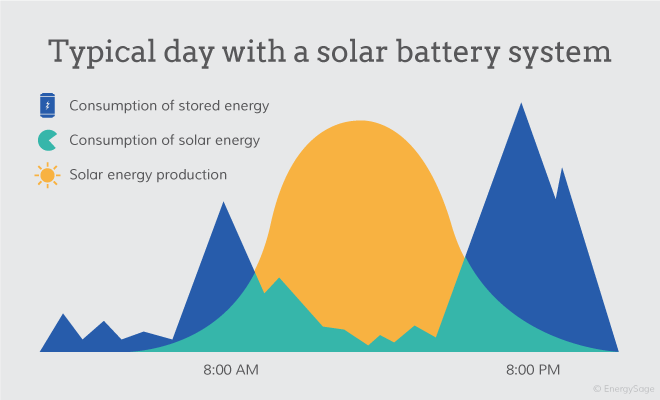Listening to people talk about solar energy in the UK, you’d be under the impression that the end of the Feed-In-Tariff has killed off any appetite to push solar energy forward, particularly in the residential sector. But with the rise of battery storage, and lithium battery storage in particular, offering a new dimension – are they missing a trick? It’s not just new customers either, even people who are already generating through the FIT can increase those benefits with a solar battery.
Historically, battery storage has been dominated by lead-acid. It’s a tried and tested technology, having been around for 150 years, but the sheer bulk and weight of batteries required made them impractical for use in many residential homes. Enter lithium-ion, with better performance in a much smaller package battery storage is now possible for the vast majority of micro-generators.
But why should I store when I already get the FIT? Those of you currently generating under the FIT will be aware that the payments are generated using ‘deemed export’ estimated figures. Basically the scheme assumes you export 50% of the energy you generate, whether you’ve used it or not. It’s therefore in your interests to use as much of the energy you generate as possible.
Looking at the graphic below we can see that the times of ‘peak demand’ are in the morning and evening, whereas ‘peak generation’ is in the middle of the day. By installing battery storage we can charge at times of ‘peak generation’ and discharge at times of ‘peak demand.’ Onsite energy usage increases from 40% to 90% in this scenario.

Combine this with the predicted introduction of time-of-use tariffs, and the argument for battery storage starts to sound persuasive. Currently the vast majority of us are on single rate tariffs. The roll out of smart meters, able to monitor energy use on a half-hourly basis, means it is likely we will start to see the introduction of tariffs with higher rates at times of ‘peak demand.’ Homeowners with battery storage can set their systems to take advantage by charging at cheap rate and discharging when energy is more expensive.
As more battery systems are installed, aggregators have begun to pool systems together to provide ‘Grid Services’ to the National Grid. Whilst renewable energy is great for sustainability, balancing demand/supply on the grid is tricky due to the irregular generation from renewable sources like solar and wind. The National Grid needs to maintain a frequency on the grid of around 50hz, so the stored energy in a network of solar batteries is an extremely useful asset. Batteries participating in a ‘Grid Services’ network offer capacity to the National Grid to charge or discharge at times of high demand or supply. Homeowners are paid a fee through the aggregator for providing this service to the National Grid.
So is it worth it?
In a word…possibly.
There are a number of variables to consider:
- Your energy use.
- Your chosen tariff.
- Amount of solar generated.
- Potential Grid Services income.
According to Ofgen and some of the bix six suppliers – potential savingscan be up to 70% of your electricity bill.
